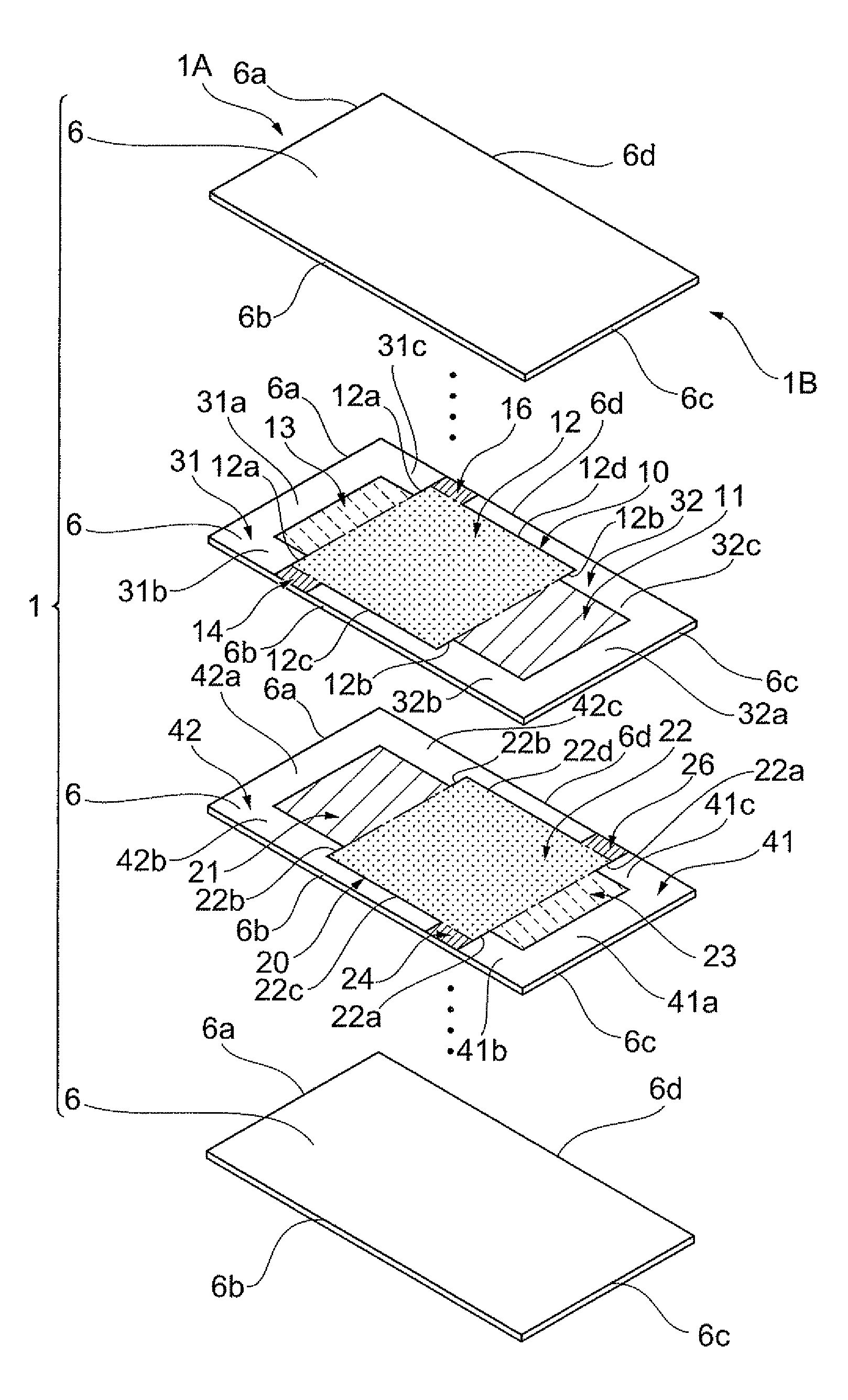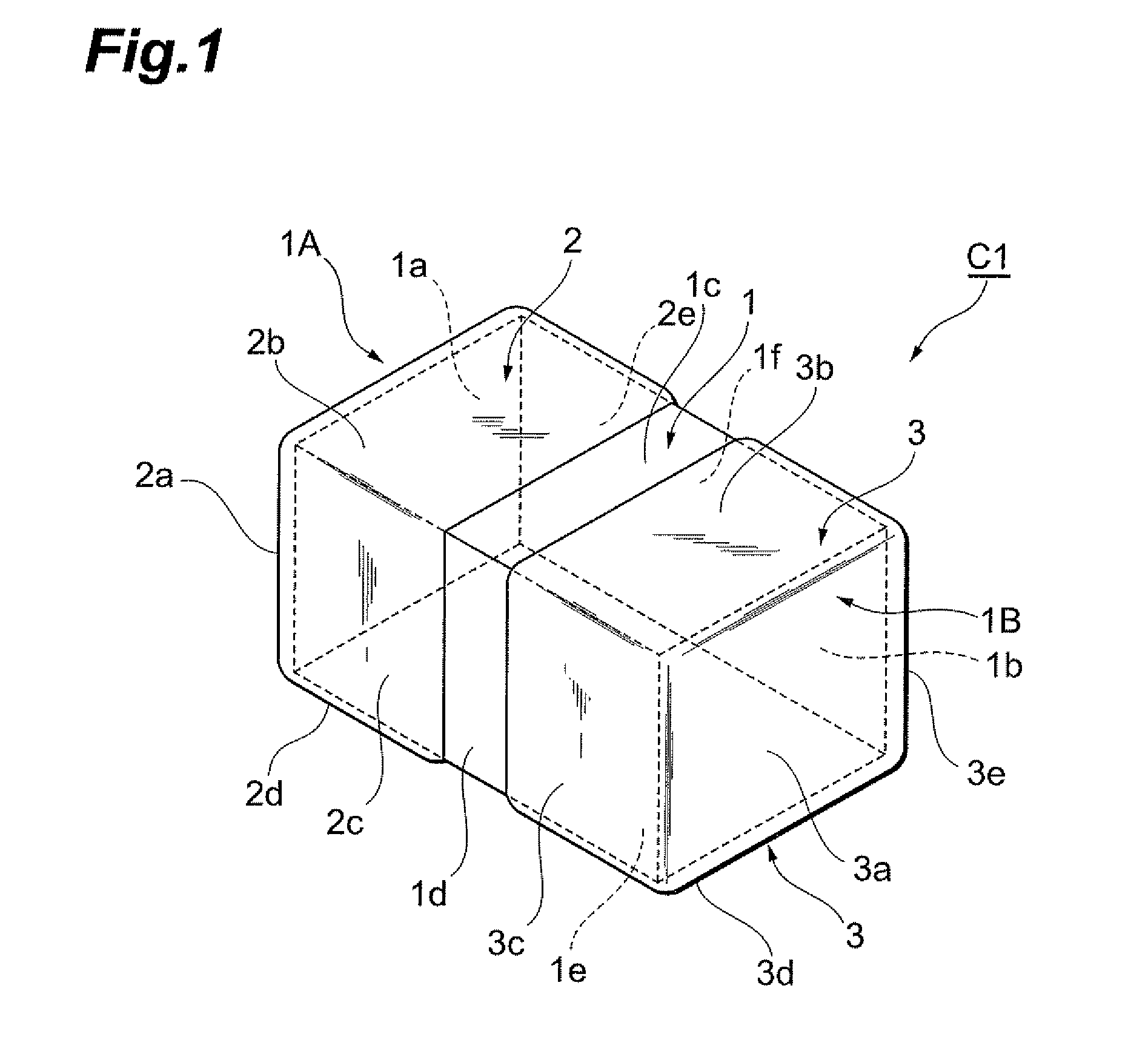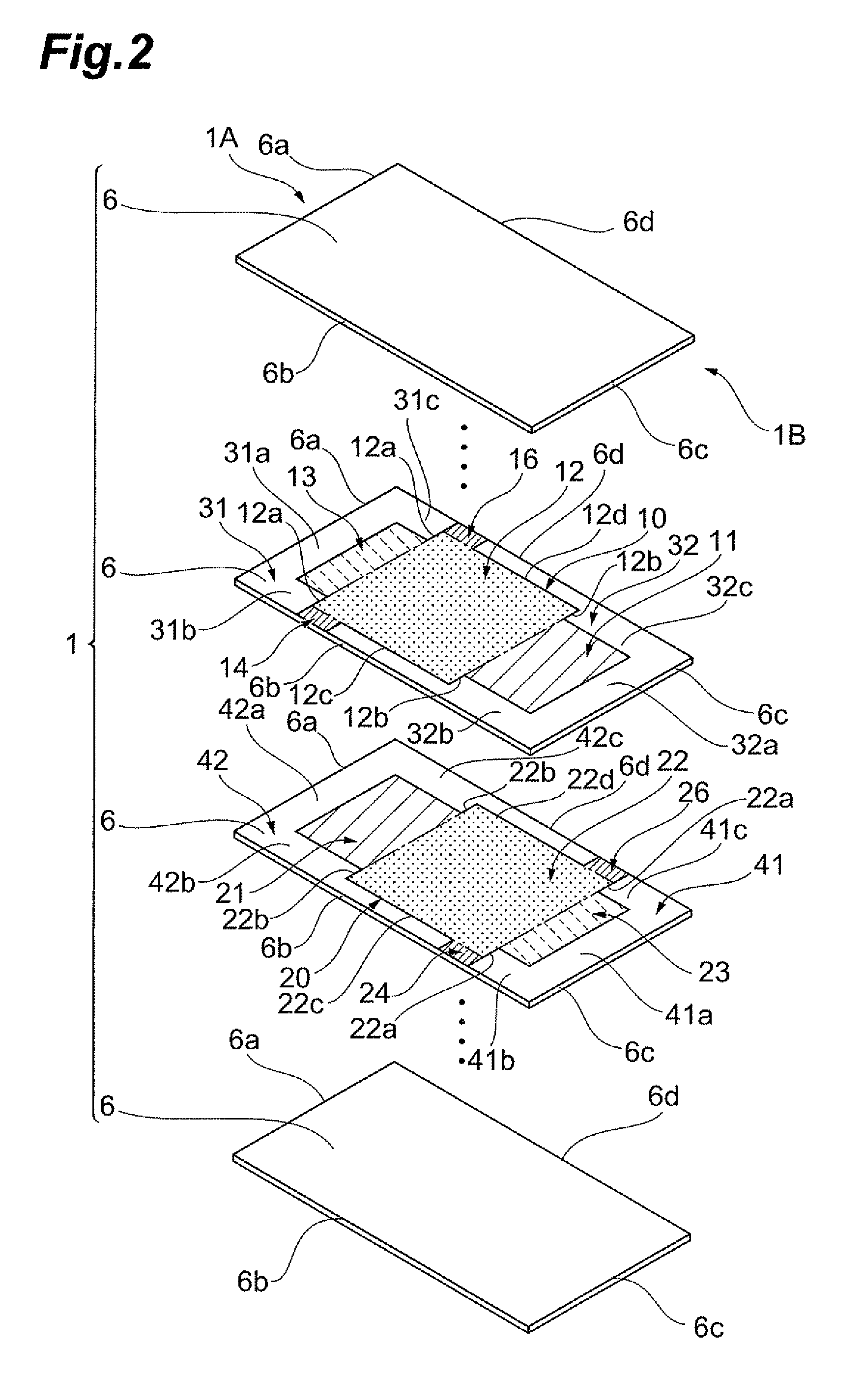Multilayer capacitor having reduced equivalent series inductance
a multi-layer capacitor and equivalent series technology, applied in the field of multi-layer capacitors, can solve the problems of further reduction in esl and inability to achieve esl reduction effect, and achieve the effects of reducing esl, improving reliability of multi-layer capacitors, and reducing esl
- Summary
- Abstract
- Description
- Claims
- Application Information
AI Technical Summary
Benefits of technology
Problems solved by technology
Method used
Image
Examples
first embodiment
[0026]The configuration of a multilayer capacitor C1 according to a first embodiment will be described with reference to FIGS. 1 to 3B. FIG. 1 is a perspective view showing the multilayer capacitor C1 according to the first embodiment. FIG. 2 is an exploded view of an element body when exploded by dielectric layer. FIGS. 3A and 3B are diagrams of a first internal electrode and a second internal electrode when viewed from a lamination direction. In FIG. 3A, a solid line indicates the first internal electrode, and a virtual line indicates the second internal electrode. In FIG. 3B, a solid line indicates the second internal electrode, and a virtual line indicates the first internal electrode. As shown in FIG. 1, the multilayer capacitor C1 includes an element body 1 which is constituted to have a substantially rectangular parallelepiped having a plurality of rectangular plate-shaped dielectric layers laminated as a single body, and a first terminal electrode 2 and a second terminal ele...
second embodiment
[0044]A multilayer capacitor according to a second embodiment will be described with reference to FIGS. 5A and 5B. FIGS. 5A and 5B are diagrams of a first internal electrode and a second internal electrode of the multilayer capacitor according to the second embodiment when viewed from the lamination direction. The multilayer capacitor according to the second embodiment is mainly different from the multilayer capacitor according to the first embodiment in that a second principal-surface electrode portion 312 of a first internal electrode 310 and a fifth principal-surface electrode portion 322 of a second internal electrode 320 have a short length in the longitudinal direction.
[0045]While an outer edge 312a of the second principal-surface electrode portion 312 is arranged near the one end 1A side, an outer edge 312b of the second principal-surface electrode portion 312 of the first internal electrode 310 at the other end 1B side is arranged at the center position of the element body 1...
third embodiment
[0046]A multilayer capacitor according to a third embodiment will be described with reference to FIGS. 6A and 6B. FIGS. 6A and 6B are diagrams of a first internal electrode and a second internal electrode of the multilayer capacitor according to the third embodiment when viewed from the lamination direction. The multilayer capacitor according to the third embodiment is different from the multilayer capacitor according to the first embodiment in that, in the longitudinal direction, the outer edge of a second principal-surface electrode portion at the other end 1B side extends to the second lead portions, and the outer edge of a fifth principal-surface electrode portion at the one end 1A side of the element body extends to first lead portions.
[0047]Specifically, an outer edge 412b of a second principal-surface electrode portion 412 of a first internal electrode 410 at the other end 1B side is aligned with an outer edge 422a of a fifth principal-surface electrode portion 422 of a secon...
PUM
 Login to View More
Login to View More Abstract
Description
Claims
Application Information
 Login to View More
Login to View More - R&D
- Intellectual Property
- Life Sciences
- Materials
- Tech Scout
- Unparalleled Data Quality
- Higher Quality Content
- 60% Fewer Hallucinations
Browse by: Latest US Patents, China's latest patents, Technical Efficacy Thesaurus, Application Domain, Technology Topic, Popular Technical Reports.
© 2025 PatSnap. All rights reserved.Legal|Privacy policy|Modern Slavery Act Transparency Statement|Sitemap|About US| Contact US: help@patsnap.com



